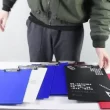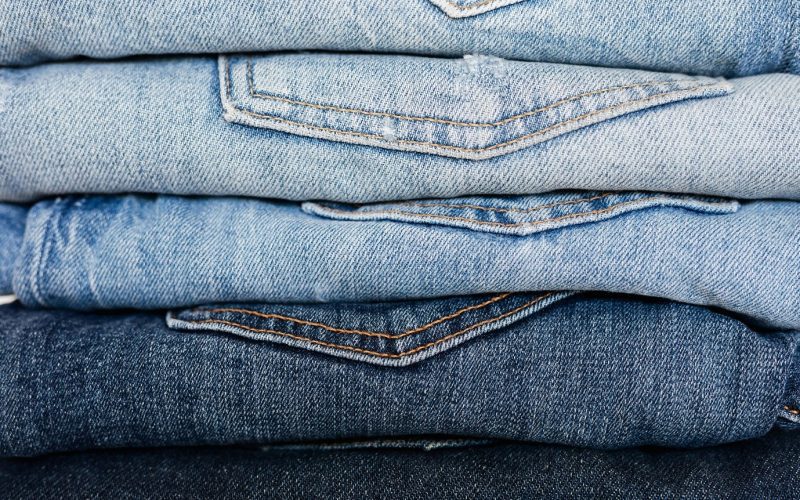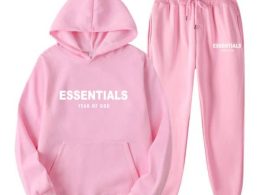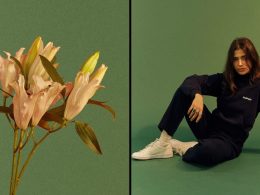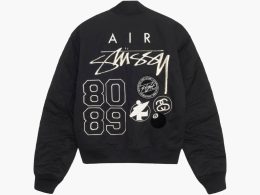Sustainable Fashion Products Leading the Market in 2024
Sustainable fashion has emerged as a significant movement in the global fashion industry, reflecting growing awareness of environmental issues, ethical production practices, and social responsibility. As consumers become more conscious of the impact of their purchases, the demand for sustainable fashion products has increased. This article explores the latest trends in sustainable fashion, highlighting key developments in materials, design, production processes, and consumer behavior.

- The Rise of Eco-Friendly Materials
One of the most notable trends in sustainable fashion is the increased use of eco-friendly materials. Traditional fashion relies heavily on synthetic fabrics and chemical-intensive production processes, which have a detrimental impact on the environment. However, the sustainable fashion movement is driving a shift towards natural, organic, and recycled materials.
Organic Cotton and Hemp
Organic cotton and hemp are two of the most popular materials in sustainable fashion. Unlike conventional cotton, organic cotton is grown without synthetic pesticides and fertilizers, reducing environmental pollution. Hemp, a fast-growing plant, requires minimal water and no pesticides, making it an excellent alternative to traditional fibers.
Recycled and Upcycled Fabrics
Another significant trend is the use of recycled and upcycled fabrics. Brands are increasingly sourcing materials from post-consumer waste, such as plastic bottles and discarded textiles, to create new clothing. This not only reduces waste but also lowers the demand for virgin materials, which are often resource-intensive to produce.
- Ethical Production Practices
Sustainable fashion is not just about the materials used but also the ethical practices behind the production of clothing. Consumers are demanding greater transparency and accountability from fashion brands, leading to a shift towards more ethical production methods.
Fair Trade and Living Wages
Fair trade certification ensures that workers in the fashion supply chain are paid fair wages and work in safe conditions. Brands that prioritize fair trade are gaining popularity as consumers seek to support companies that value human rights and social justice. This trend is also reflected in the growing demand for clothing produced in facilities that adhere to living wage standards, which go beyond minimum wage requirements.
Slow Fashion Movement
The slow fashion movement is a reaction against the fast fashion industry, which is characterized by mass production, low prices, and short-lived trends. Slow fashion emphasizes quality over quantity, encouraging consumers to invest in timeless, well-made pieces that are designed to last. This approach reduces the environmental impact of clothing production and promotes a more sustainable consumption pattern.
- Innovations in Sustainable Design
Innovation is at the heart of the sustainable fashion movement, with designers experimenting with new techniques and technologies to create eco-friendly products. These innovations are not only reducing the environmental footprint of fashion but also offering consumers unique and stylish options.
3D Printing and Zero-Waste Design
3D printing is revolutionizing sustainable fashion by enabling designers to create garments with minimal waste. This technology allows for precise production, reducing the need for excess fabric and cutting waste to nearly zero. Zero-waste design techniques, such as pattern making that utilizes every inch of fabric, are also gaining traction, offering a creative solution to the problem of textile waste.
Circular Fashion
Circular fashion is a concept that aims to create a closed-loop system where clothing is designed, produced, and recycled in a way that minimizes waste and environmental impact. This approach includes designing products that can be easily disassembled for recycling, using biodegradable materials, and offering take-back programs where consumers can return old garments for recycling or resale.
- Consumer Behavior and Sustainable Fashion
The rise of sustainable fashion is closely linked to changes in consumer behavior. As awareness of environmental and social issues grows, consumers are increasingly prioritizing sustainability in their purchasing decisions.
Conscious Consumerism
Conscious consumerism refers to the trend of consumers making deliberate choices to purchase products that align with their values. In the fashion industry, this means seeking out brands that prioritize sustainability, ethical production, and transparency. This shift is driving demand for sustainable fashion products and encouraging brands to adopt more responsible practices.
Rental and Resale Markets
The rental and resale markets are booming as consumers look for ways to reduce their environmental impact without sacrificing style. Clothing rental services allow consumers to access high-quality, designer pieces without the need for ownership, reducing the demand for new clothing production. Similarly, the resale market offers a sustainable alternative to fast fashion by extending the life of garments and reducing waste.
- Challenges and Opportunities in Sustainable Fashion
While the sustainable fashion movement is gaining momentum, it is not without its challenges. However, these challenges also present opportunities for innovation and growth in the industry.
Cost and Accessibility
One of the main challenges in sustainable fashion is the higher cost of eco-friendly materials and ethical production practices. This can make sustainable fashion products less accessible to the average consumer. However, as demand increases and technology advances, prices are expected to become more competitive, making sustainable fashion more affordable.
Greenwashing
Greenwashing, or the practice of making misleading claims about the environmental benefits of a product, is a significant issue in the sustainable fashion industry. Some brands use sustainability as a marketing tool without making meaningful changes to their production practices. Consumers and industry watchdogs are increasingly scrutinizing these claims, pushing for greater transparency and accountability.
- The Future of Sustainable Fashion
The future of sustainable fashion looks promising as the industry continues to evolve and adapt to new challenges. Advances in technology, materials, and consumer engagement are driving the movement forward, with the potential to transform the fashion industry into a more sustainable and ethical space.
Tech-Driven Sustainability
Technology is expected to play a crucial role in the future of sustainable fashion. Innovations such as AI-driven design, blockchain for supply chain transparency, and new textile recycling technologies are likely to shape the industry’s future. These developments will enable brands to produce clothing more efficiently, reduce waste, and provide consumers with greater insight into the origins of their garments.
Collaborative Efforts
Collaboration between brands, governments, and consumers will be essential in driving the sustainable fashion movement forward. Industry-wide initiatives, such as the Fashion Pact and the Sustainable Apparel Coalition, are already making strides in setting standards and promoting best practices. Continued collaboration will be key to overcoming challenges and achieving a more sustainable fashion industry.
Analysis Table: Trends in Sustainable Fashion
| Trend | Description | Impact on Industry |
| Eco-Friendly Materials | Increased use of organic, recycled, and upcycled fabrics. | Reduces environmental impact, promotes resource efficiency. |
| Ethical Production Practices | Focus on fair trade, living wages, and safe working conditions. | Enhances brand reputation, addresses social justice issues. |
| Innovations in Design | Adoption of 3D printing, zero-waste design, and circular fashion. | Minimizes waste, promotes creativity, and extends product lifecycle. |
| Consumer Behavior Shifts | Rise in conscious consumerism, rental, and resale markets. | Drives demand for sustainable products, reduces clothing waste. |
| Challenges and Opportunities | Issues like cost, accessibility, and greenwashing. | Offers room for growth and innovation in response to these challenges. |
Comparative Table: Sustainable Fashion vs. Fast Fashion
| Aspect | Sustainable Fashion | Fast Fashion |
| Materials | Organic, recycled, and upcycled fabrics. | Synthetic and non-renewable materials. |
| Production Practices | Ethical, fair trade, focus on living wages. | Low-cost, mass production, often exploitative labor. |
| Design Philosophy | Timeless, high-quality, durable designs. | Trend-driven, short lifecycle, disposable. |
| Environmental Impact | Lower carbon footprint, reduced waste, resource efficiency. | High carbon footprint, significant waste, resource-intensive. |
| Consumer Appeal | Attracts eco-conscious consumers, promotes responsible consumption. | Appeals to trend-driven consumers, promotes overconsumption. |
| Price | Generally higher due to ethical practices and materials. | Lower, due to cost-cutting measures in production. |
Conclusion
Sustainable fashion is no longer a niche market but a growing force in the global fashion industry. The trends discussed in this article reflect a shift towards more responsible production and consumption patterns, driven by consumer demand and innovations in materials and design. While challenges remain, the future of sustainable fashion looks promising, with opportunities for continued growth and positive change.





